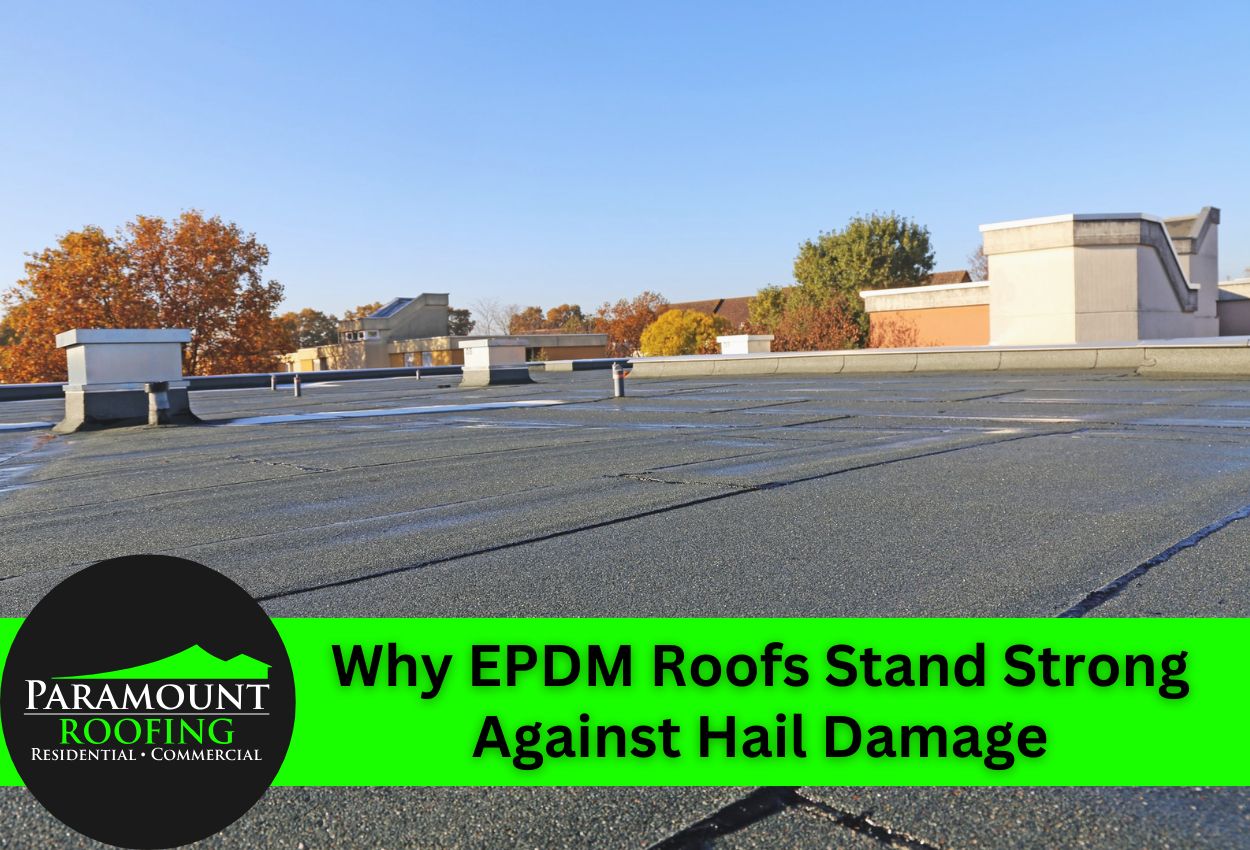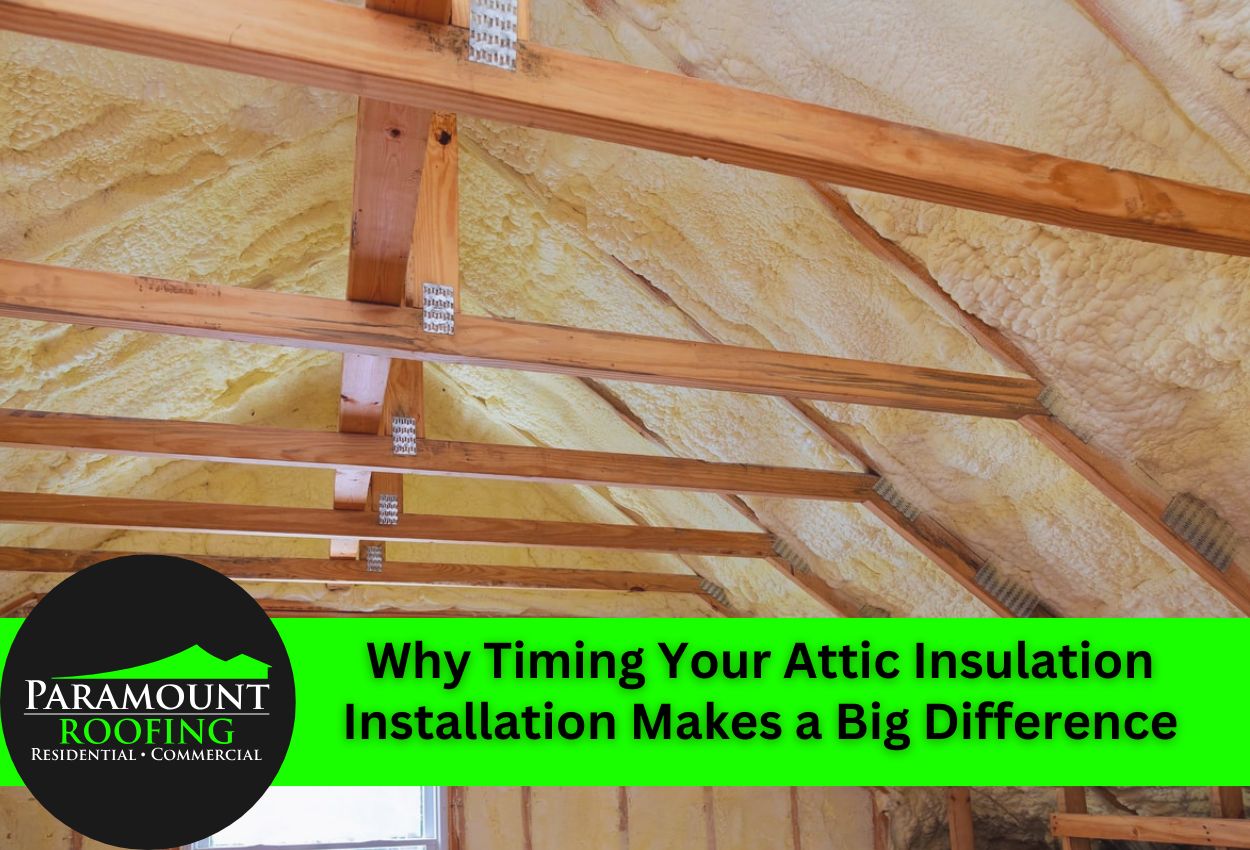Will Silicone Roof Coatings Stick to EPDM? Choosing the Right Product for Your Building
Detroit property owners with EPDM rubber membrane roofs often face important decisions when considering roof restoration options. A common question that arises is whether silicone roof coatings will properly adhere to EPDM surfaces.
EPDM (ethylene propylene diene monomer) has been a popular choice for commercial buildings across Michigan for decades due to its durability and weather resistance. However, as these roofs age, restoration becomes necessary, and silicone coatings present a potential solution that many Detroit building owners are exploring.
The adhesion between silicone coatings and EPDM membranes depends on several critical factors, including the age and condition of the existing roof, proper surface preparation, and the specific silicone product selected. Unlike acrylic alternatives, silicone roof coatings offer exceptional water resistance and UV protection that can be particularly valuable in Detroit’s harsh winters and summer storms.
Understanding the compatibility between these materials is essential before investing in a roof restoration project. The right application techniques and products can transform an aging EPDM roof into a watertight, energy-efficient system that performs reliably for years to come.
The Science Behind Silicone Adhesion to EPDM Surfaces
The effectiveness of silicone coatings on EPDM roofs ultimately comes down to chemistry and physics. EPDM rubber is a non-polar material with a smooth surface that naturally resists adhesion. Silicone, meanwhile, is a flexible polymer that forms bonds through its siloxane structure. This fundamental difference creates the primary challenge when applying silicone coatings to EPDM membranes. Professional surface preparation, including thorough cleaning and, if necessary, appropriate primers specifically designed for EPDM-to-silicone transitions, is essential for successful adhesion.
Michigan’s climate adds another layer of complexity to this adhesion equation. The extreme temperature fluctuations between our harsh winters and humid summers cause EPDM membranes to expand and contract significantly. Any coating applied must maintain adhesion through these changes while withstanding ice and snow, UV exposure, and periodic water ponding common on commercial roofs in Detroit.
Modern silicone coatings have improved dramatically, with some products engineered specifically for EPDM compatibility. These specialized silicone coatings can achieve excellent adhesion when properly applied, creating a seamless, waterproof barrier that protects aging EPDM roofs from further deterioration in our challenging Michigan environment.
Why Surface Preparation is Necessary for Successful Adhesion
The key to ensuring silicone roof coatings properly adhere to EPDM membranes lies in thorough surface preparation. Detroit’s industrial environment creates unique challenges, as airborne pollutants and manufacturing residues can settle on commercial roofs and interfere with coating adhesion.
First, the EPDM surface must be completely clean. This requires washing with a commercial-grade cleaner specifically formulated for EPDM rubber. Any oils, dirt, or biological growth must be removed because they create a barrier between the coating and the membrane. In Detroit’s older industrial areas, roofs often contain accumulated carbon deposits that require extra attention during cleaning.
After cleaning, the membrane must be dried before moving forward. Any seams, flashing, or damaged areas should be repaired using appropriate EPDM materials. If recommended by the silicone coating manufacturer, the membrane should then be primed with an EPDM-specific primer that creates a chemical bond between the rubber surface and the silicone coating.
Common preparation mistakes include insufficient cleaning, applying coatings to wet surfaces, skipping the primer step, using the wrong primer, and applying coatings in improper weather conditions. Michigan’s variable humidity and temperature must be factored into the application timeline. Professional roofing contractors in the Detroit area understand these local conditions and can ensure the preparation process accounts for these variables, resulting in a silicone coating that forms a lasting bond with the EPDM substrate.
Primer Requirements: The Key to Strong Silicone-EPDM Bonds
When applying silicone coatings to EPDM roofing membranes, primers may be needed to ensure proper adhesion between these two dissimilar materials. Before applying the silicone coating, double-check the manufacturer’s information to see if a primer is needed. Using a primer when not needed, and conversely, not adding one when it is needed, can directly impact the success of your coating project.
The application technique used impacts the effectiveness of the primer. For optimal results on Detroit commercial roofs, primers should be applied in thin, even coats using airless sprayers or medium-nap rollers. Temperature and humidity must be within the manufacturer’s specifications — generally between 50 and 80 degrees Fahrenheit with humidity below 85%.
Allow the primer to cure completely before applying the silicone coating. Rushing this critical step is a common mistake that compromises adhesion. Primer coverage rates typically range from 200 to 300 square feet per gallon, depending on the specific product and the porosity of the aged EPDM surface. Professional roofing contractors understand that this preparation phase, though time-consuming, is essential for successful application.
Benefits of Silicone Coatings for Aging EPDM Roofs
Silicone coatings offer substantial benefits for aging EPDM roofs across Detroit, particularly as these rubber membranes face the region’s challenging freeze-thaw cycles. As EPDM roofs age, they become vulnerable to UV degradation, shrinkage, and seam failures. Silicone coatings create a seamless, waterproof barrier that revitalizes these compromised roofing systems without the disruption and expense of complete tear-offs.
One of the primary advantages is silicone’s exceptional UV resistance. Detroit experiences approximately 180 at least partly sunny days annually, and this persistent ultraviolet exposure accelerates EPDM deterioration. Silicone coatings contain UV-stable components that protect the underlying membrane, preventing further chalking and brittleness that commonly affect aging rubber roofs.
The waterproofing capabilities of silicone are particularly valuable during Michigan’s spring thaws and heavy summer storms. Unlike other coating types, silicone maintains its flexibility in subzero temperatures and doesn’t harden or crack during winter. This elasticity allows the coating to accommodate the substantial expansion and contraction that EPDM experiences throughout Detroit’s extreme temperature fluctuations.
Perhaps most impressively, silicone’s highly reflective surface dramatically improves energy efficiency. The white coating reflects up to 88% of solar radiation, significantly reducing cooling costs during Detroit summers when commercial buildings face peak energy demands. This reflectivity transforms an aging black EPDM roof into a high-performance, energy-efficient system that provides measurable utility savings for years to come.
Limitations and Alternative Solutions for EPDM Restoration
While silicone coatings offer many benefits for EPDM roof restoration, they aren’t always the ideal solution for every situation. Detroit building owners should be aware of certain limitations that may affect their roofing decisions. Severely deteriorated EPDM membranes with extensive physical damage, widespread brittleness, or multiple tears may not be suitable candidates for coating restoration. In these cases, the membrane may be too compromised to serve as a stable foundation for any coating system.
Structural issues like poor drainage, inadequate slope, or excessive ponding water present significant challenges for silicone coatings. Though silicone withstands ponding better than other coatings, persistent standing water can eventually compromise even the best coatings. These underlying structural problems should be addressed before considering any coating application.
For some EPDM applications, alternative coating systems may provide better solutions. Acrylic coatings, while less water-resistant than silicone, often cost less and can work well on EPDM roofs with excellent drainage. Polyurethane coatings offer superior tensile strength and abrasion resistance for roofs with heavy foot traffic. Some hybrid systems combine an acrylic base coat with a silicone top coat to balance cost and performance.
Detroit building owners facing these limitations should consult with experienced roofing professionals who understand Michigan’s specific climate challenges. A comprehensive roof inspection can determine whether restoration is viable or if replacement represents the more cost-effective long-term solution for severely compromised EPDM systems.
Professional Silicone Coating Application vs. DIY: Making the Right Choice for Your Detroit Property
When considering silicone coatings for your EPDM roof, one crucial decision Detroit property owners face is whether to hire professionals or attempt a do-it-yourself approach. This choice affects both immediate results and long-term performance, especially considering Michigan’s challenging weather conditions.
Silicone coating application requires specialized equipment that most property owners don’t possess. Commercial-grade airless sprayers with specific pressure ratings and tip sizes ensure even, consistent coverage that’s difficult to achieve with rental equipment. Professionals also use moisture meters, mil gauges, and adhesion testers to verify proper installation conditions and results.
Other than equipment, professional applicators bring expertise in silicone-EPDM compatibility. They understand the specific surface preparation requirements, primer selection, and application techniques that ensure proper adhesion. This specialized knowledge becomes particularly valuable when addressing the unique challenges of Detroit roofs, including industrial fallout effects and extreme seasonal temperature variations.
Perhaps most importantly, manufacturer warranties typically require professional installation. DIY applications usually void these valuable protections, leaving property owners without help if problems develop. When selecting a contractor in the Detroit area, look for companies with specific EPDM experience, manufacturer certifications, and local references from similar projects. Ask potential contractors about their surface preparation protocols and whether they perform adhesion testing before starting the complete application.
Expert Roof Coating Solutions for EPDM in Detroit
If you’re considering updating or restoring your EPDM roof in Detroit, understanding the compatibility of silicone roof coatings is essential. At Paramount Roofing, we specialize in applying coatings that are specifically designed to adhere to EPDM rubber roofs. Our proven techniques ensure that the silicone bonds effectively, enhancing the durability and extending the lifespan of your roofing system.
Silicone coatings not only improve the performance of your roof but also offer increased UV protection and superior waterproofing benefits. This helps prevent leaks and minimize wear from freeze-thaw cycles.
Don’t let the Michigan weather take a toll on your property. Ensure your roof is prepared to handle whatever comes its way with a professional silicone coating application from Paramount Roofing. Call us today at (586) 690-0227 to schedule a consultation and learn more about how our services can benefit your EPDM roofing system.
 Free Estimate
Free Estimate
 Request Service
Request Service Locations
Locations 



